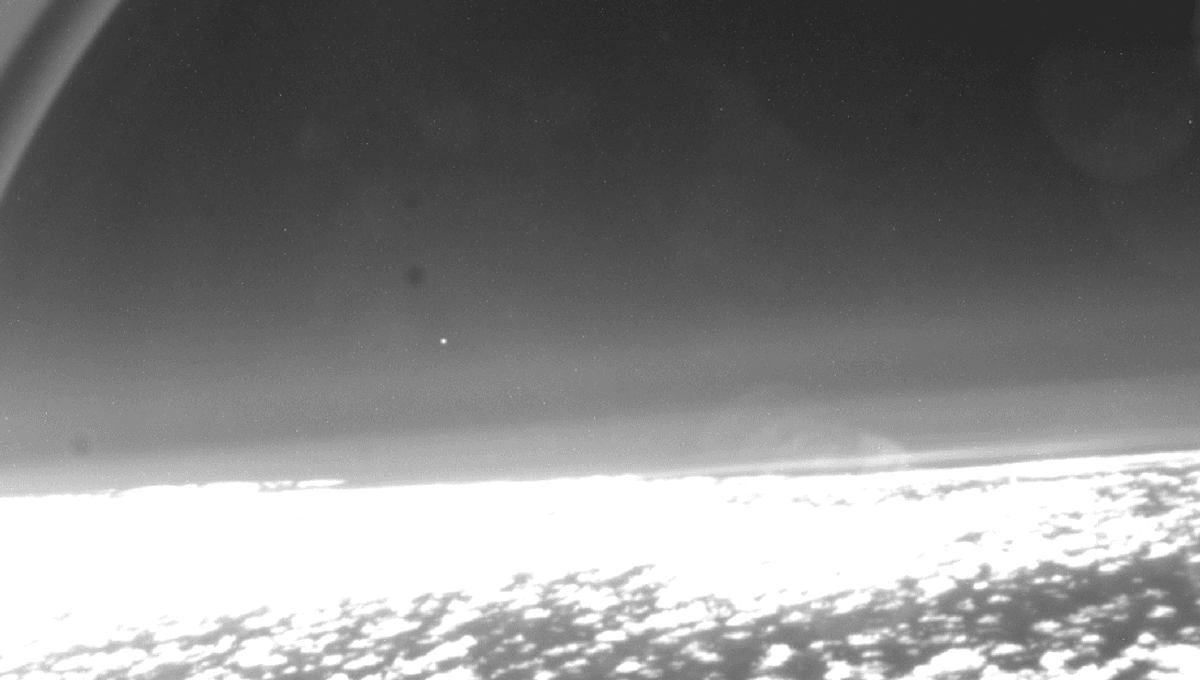
A plane has captured the first photo of a spacecraft reentering the Earth’s atmosphere from a high-speed orbit as it flew over the South Pacific Ocean.
On September 8, the first of the European Space Agency’s (ESA’s) Cluster satellites – named Salsa – made its final journey to Earth. Launched in the year 2000, the four satellites that make up the cluster have spent their time in orbit dipping in and out of the planet’s magnetic field, investigating how the Sun and the Earth interact.
“Cluster is a constellation of four spacecraft flying in formation around Earth,” ESA explains. “They relay the most detailed information ever about how the solar wind affects our planet in three dimensions.”
When the satellites were launched, space junk regulations weren’t what they are today, and it was expected that the spacecraft would fall to Earth “naturally” with little control over where it would ultimately crash. That isn’t ideal, however, and so the space agency responsible for it has monitored it as its mission came to its end, making adjustments to its course in order to push it into the atmosphere over the ocean where any debris that survives reentry will not cause harm to unsuspecting humans or animals below.
“Salsa’s reentry was always going to be very low risk, but we wanted to push the boundaries and reduce the threat even further, demonstrating our commitment to ESA’s Zero Debris approach,” ESA Director of Operations, Rolf Densing, explained in a statement. “By studying how and when Salsa and the other three Cluster satellites burn up in the atmosphere, we are learning a great deal about reentry science, hopefully allowing us to apply the same approach to other satellites when they come to the end of their lives.”
The satellite came down safely, and was observed in a photo taken from a plane. The ESA hopes that the re-entry will go down in history for helping the space agency lead the way in sustainable space exploration.
Source Link: Plane Captures First-Ever Photo Of High-Speed Satellite Reentering Earth's Atmosphere